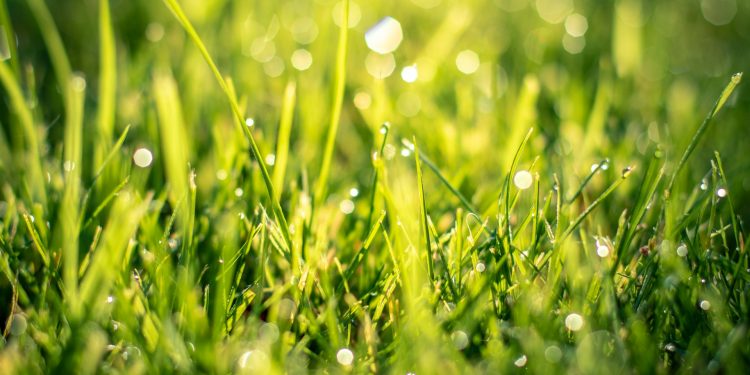In an era increasingly defined by climate change and environmental degradation, homeowners are seeking ways to minimize their ecological footprint. One area where this has become particularly pertinent is in lawn care and maintenance, specifically in the practice of lawn watering. Traditional lawn watering methods often result in significant water waste, contributing to the depletion of valuable water resources. This article explores sustainable practices for eco-friendly lawn watering that not only conserve water but also promote a healthier lawn and environment.
The Importance of Sustainable Lawn Watering
Water is a precious resource, and its conservation is crucial for the sustainability of our planet. Residential lawns cover a vast area in many countries, especially in suburban regions, making the need for efficient watering practices imperative. Over-watering lawns not only wastes water but also leads to runoff, which can carry pollutants into our waterways. Conversely, under-watering can stress lawn grasses, making them more susceptible to disease, pests, and weed invasion. Therefore, striking a balance through sustainable watering practices is essential for maintaining a healthy lawn and environment.
Understanding Your Lawn’s Needs
The first step towards sustainable lawn watering is understanding your lawn’s specific water needs. Different grass types have varying requirements for water, depending on their native climates and growth habits. For instance, cool-season grasses like Kentucky bluegrass require more water during hot, dry periods, while warm-season grasses, such as Bermuda grass, are more drought-tolerant. Conducting a soil test can also provide insights into your lawn’s unique needs, helping you tailor your watering practices more effectively.
Timing and Frequency of Watering
The timing and frequency of watering are crucial in conserving water while ensuring your lawn receives the moisture it needs. Early morning is the best time to water your lawn, as cooler temperatures and calmer winds minimize evaporation and water waste. Watering in the evening can leave the lawn damp overnight, increasing the risk of fungal diseases. Ideally, lawns should be watered deeply but infrequently, encouraging the roots to grow deeper into the soil, which improves drought resistance. A general rule of thumb is to water your lawn once or twice a week, providing enough water to moisten the soil to a depth of about 6 inches.
Efficient Watering Techniques
Advancements in irrigation technology have made efficient watering easier than ever. Drip irrigation systems and soaker hoses target water directly to the soil, reducing evaporation and runoff. Smart sprinkler systems equipped with weather sensors can adjust watering schedules based on rainfall, soil moisture levels, and evapotranspiration rates, ensuring lawns receive water only when needed. For homeowners using traditional sprinklers, positioning them to avoid watering non-lawn areas and using timers can significantly reduce water waste.
Alternative Lawn Options
One of the most effective ways to reduce water use is to reconsider the traditional grass lawn altogether. Xeriscaping, or landscaping with drought-resistant plants and minimal turfgrass, can drastically cut down on water use. Native plants adapted to your region’s climate require less water and maintenance, promoting biodiversity and providing habitats for local wildlife. For those not ready to give up the look of a traditional lawn, micro clover and other low-water ground covers can provide a sustainable and visually appealing alternative.
Rainwater Harvesting
Capturing and storing rainwater for lawn irrigation is a highly sustainable practice that reduces dependence on municipal water supplies. Rain barrels can be easily connected to downspouts to collect water from your roof during rainfall. This collected rainwater can then be used to water your lawn and garden, offering a free and eco-friendly water source.
The Role of Mulching
Mulching plays a significant role in conserving soil moisture, reducing the need for frequent watering. By applying a layer of organic mulch around plants and over bare soil, evaporation is minimized, and the soil retains moisture for longer periods. Mulch also adds organic matter to the soil as it decomposes, improving soil structure and health.
Educating and Engaging the Community
Sustainable lawn watering is not only an individual effort but also a community-wide initiative. Sharing knowledge and resources with neighbors, participating in local water conservation programs, and advocating for sustainable practices within homeowner associations can amplify the impact of individual actions. Education on the importance of water conservation and practical guidance on implementing sustainable lawn care practices can foster a community committed to environmental stewardship.
Conclusion
Eco-friendly lawn watering practices offer a pathway to conserving water while maintaining beautiful and healthy lawns. By understanding the specific needs of our lawns, employing efficient watering techniques, exploring alternative lawn options, and engaging our communities, we can make significant strides toward sustainability. These practices not only conserve precious water resources but also contribute to the health of our planet, ensuring a greener, more sustainable future for generations to come.









